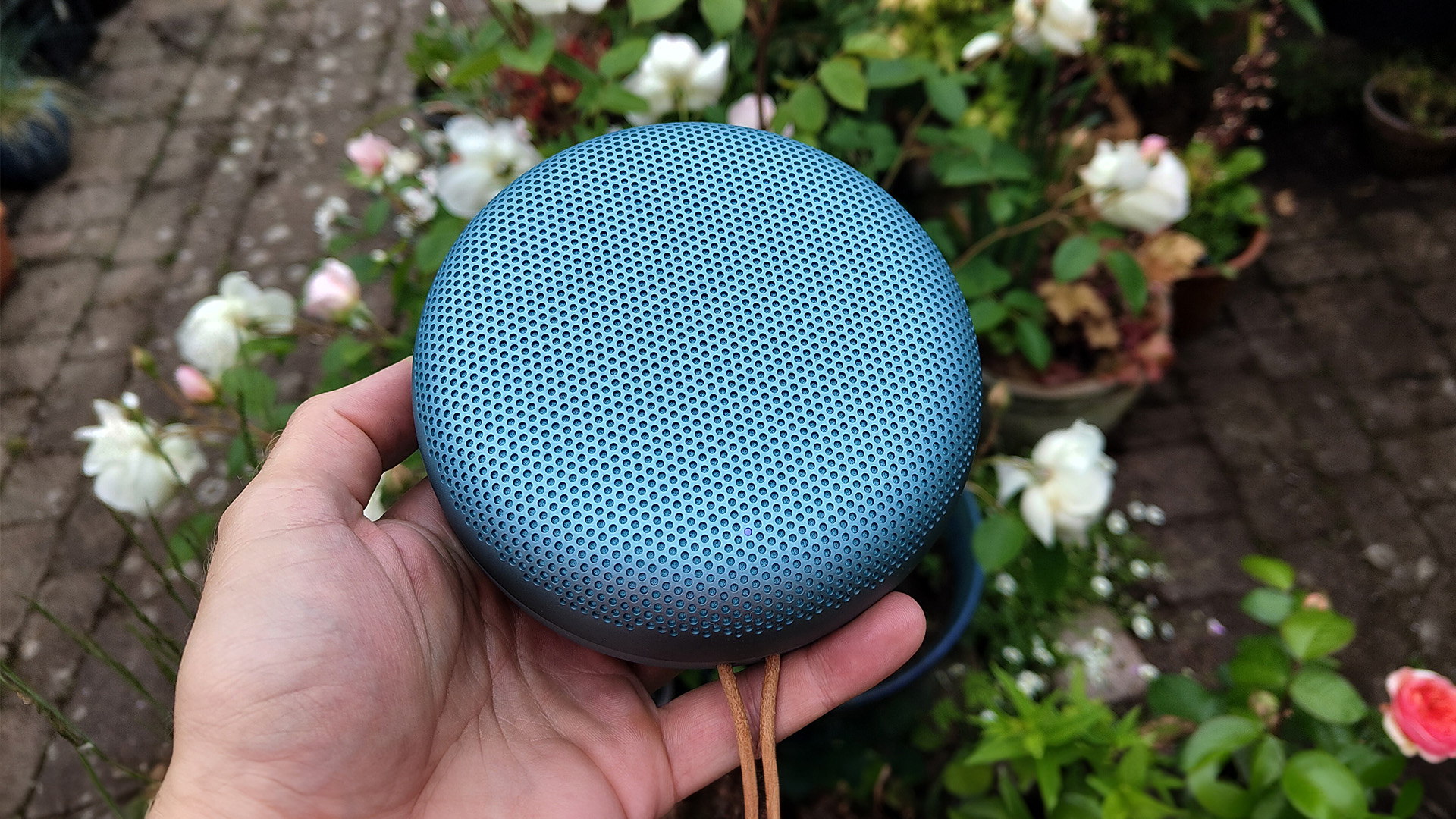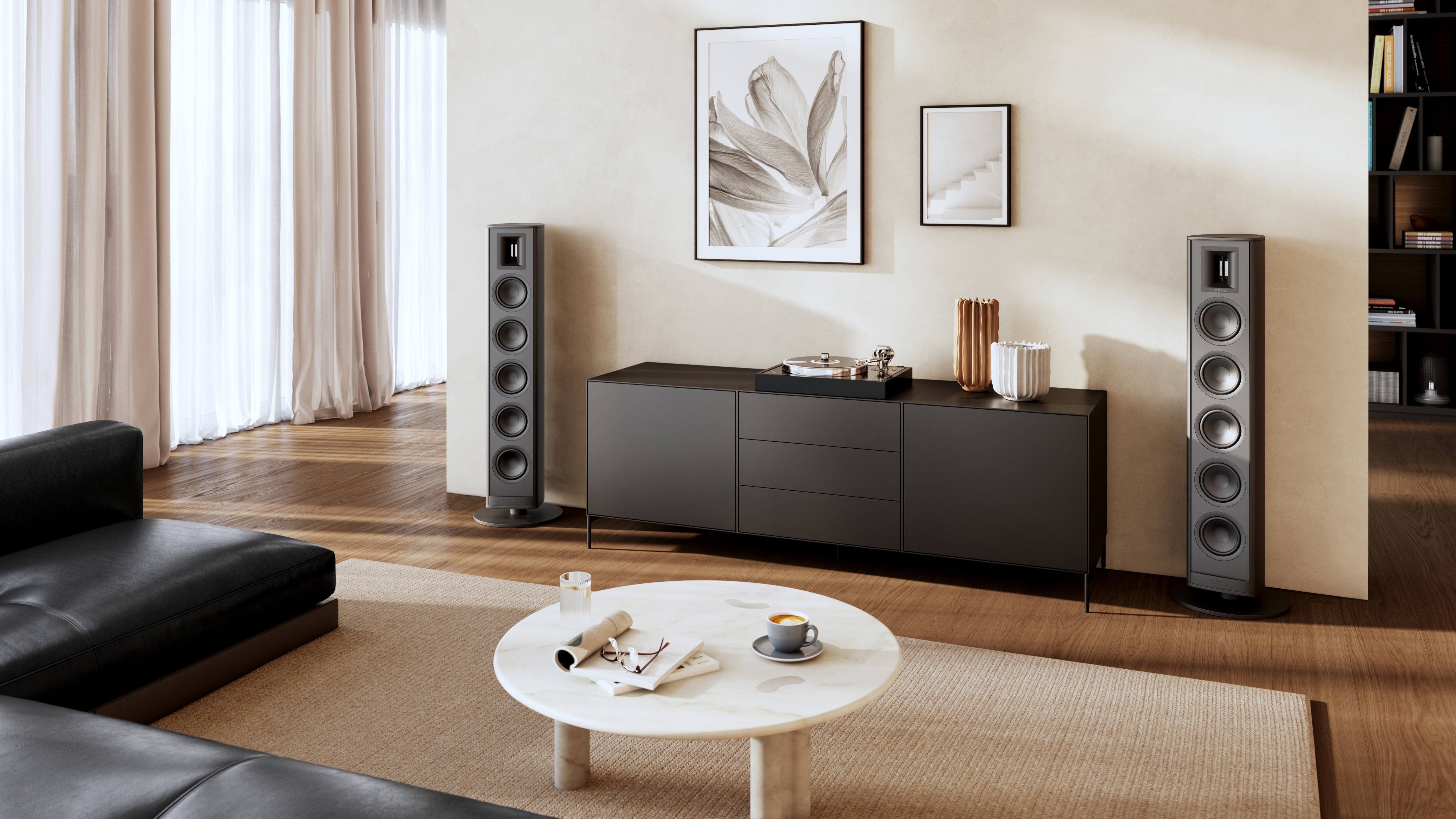What Hi-Fi? Verdict
You can buy larger, more powerful alternatives for a lower price, but its excellent build quality and notable sonic talents make the stylish Beosound A1 (3rd Gen) a tempting proposition
Pros
- +
Sounds composed, controlled and cohesive
- +
Pleasing levels of clarity and detail, especially in the midrange
- +
Built to a high standard
Cons
- -
Rivals offer greater sense of dynamic contrast
- -
No more Alexa integration
- -
Expensive compared with class-leading alternatives
Why you can trust What Hi-Fi?
So much has changed in the world since the last Beosound A1 (2nd Gen) hit the shelves in 2020. The stylish portable Bluetooth speaker was a big hit with the What Hi-Fi? team, scooping up a five-star review and earning admiring 'oohs' and 'ahhs' from our testers for its entertaining sound and beautiful build.
We didn’t expect that it would take five whole years for the third-generation model to arrive. We’ve had a global pandemic, seismic political instability and, most shockingly of all, Tottenham Hotspur FC managed to win a major trophy – that’s how long it’s been.
Much as we admired the Beosound A1 (2nd Gen), the world has moved on. JBL has put its foot on the proverbial gas during those interim years, upping its game with one brilliant portable Bluetooth speaker after another, while Bose has staked its claim in the portable realm with the likes of the excellent Soundlink Max.
That leaves us with a simple question: is this a triumphant return for the Bang & Olufsen Beosound A1 (3rd Gen), or has it failed to keep up in an ever-changing, ever-competitive audio world?
Price
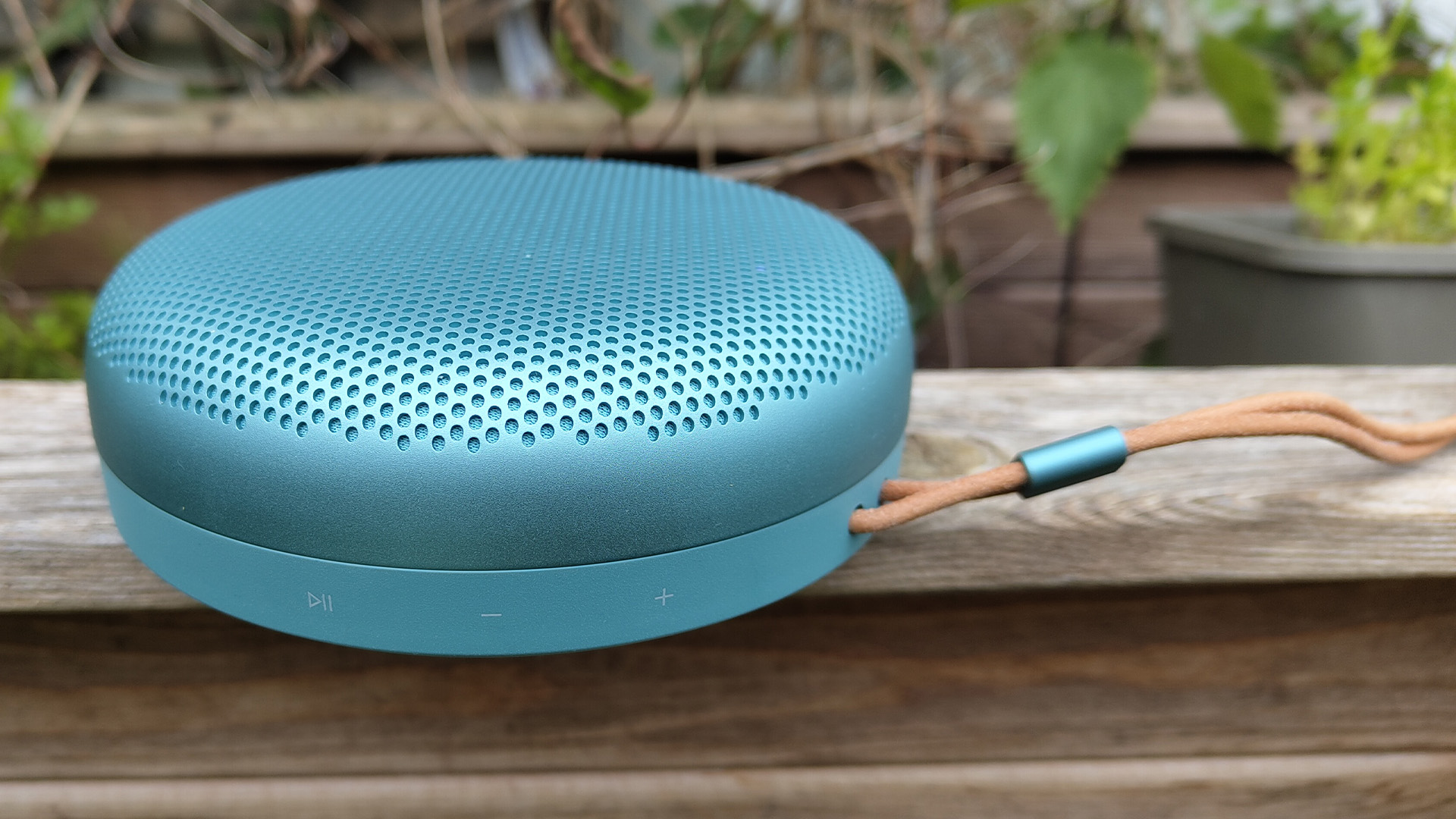
Small it may be, but cheap it is not. The Bang & Olufsen Beosound A1 (3rd Gen) is priced at £299 / $249 / AU$639, which puts it in a decidedly premium bracket as far as Bluetooth speakers are concerned. B&O devices of any shape or size rarely come cheap, let’s be honest.
Competition is fierce. The five-star JBL Flip 7 is a slightly smaller alternative which costs just £130 / $150 / AU$170, while the superb JBL Charge 6 currently sits at around £170 / $199 / AU$200. The premium Dali Katch G2 is still around, and as it’s getting on a bit, you can usually pick one up for £299 in the UK, AU$600 in Australia, and at an unusually high US figure of roughly $600.
If you want something that’s truly price comparable to the B&O, you’re going to have to go all the way up to the JBL Xtreme 4 which costs around £250 / $300 / AU$400 at the time of writing. However, the JBL is much larger, much less portable operator – you can’t fit the Xtreme 4 in your rucksack, after all.
The latest hi-fi, home cinema and tech news, reviews, buying advice and deals, direct to your inbox.
Build & design

When we reviewed it in 2020, we described the Beosound A1 (2nd Gen) as having dimensions similar to “a large floury bap or an English muffin”. In the spirit of intercontinental co-operation and to aid our non-UK-based readers, imagine a large burger bun or an oversized, extra-thick pancake.
If food analogies aren’t your thing, the third-gen iteration is a round, relatively thick portable speaker that’s smaller than a Frisbee and bigger than a coaster.
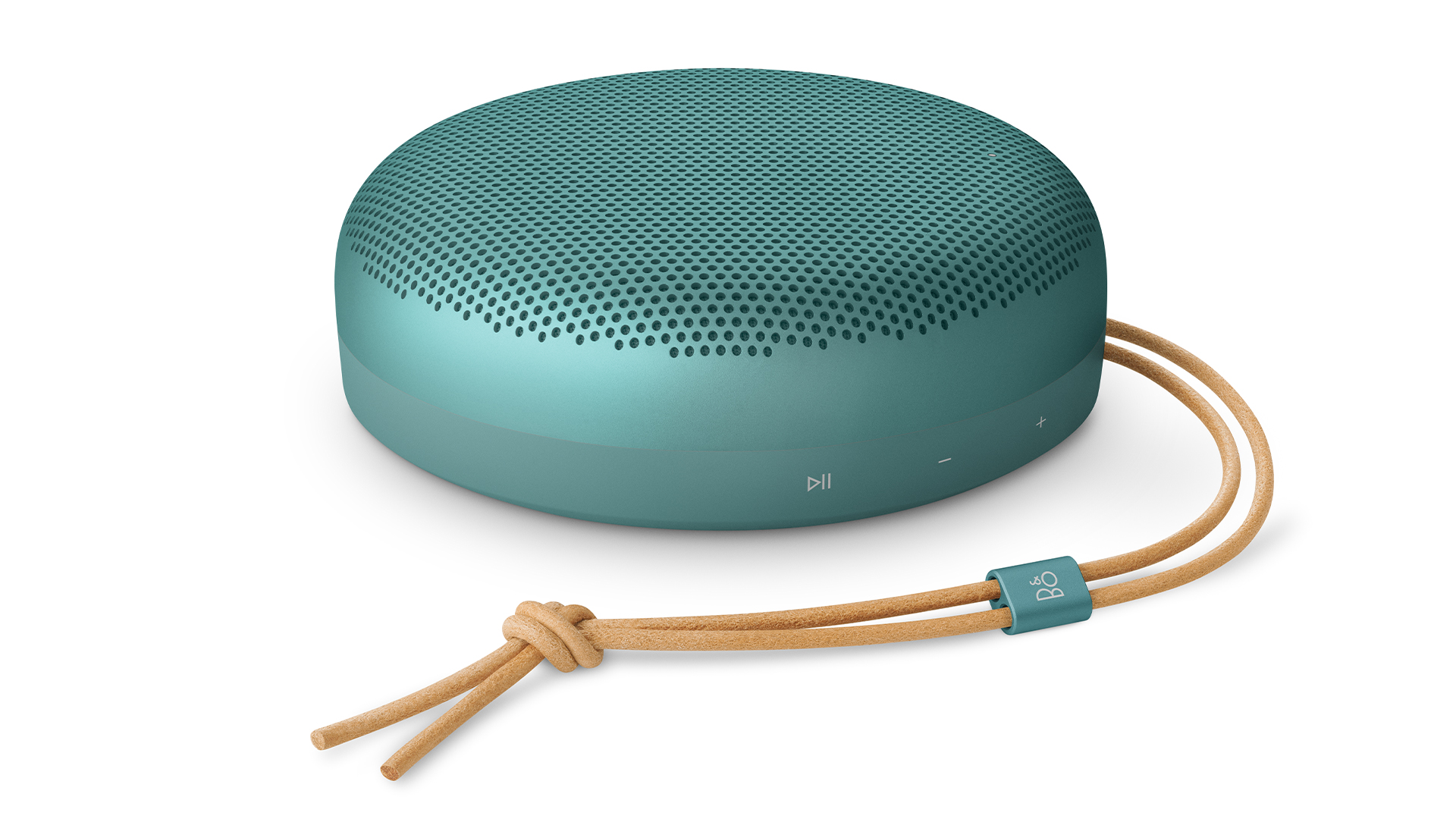
Power 60 watts
Bluetooth 5.1 (SBC, AAC and aptX Adaptive codec support)
Mains-powered or battery-powered Battery-powered
Battery life 24 hours
Features IP67 waterproof rating, Fast Pair and Swift Pair, stereo pairing
Connections USB-C for wired audio and charging
Dimensions (hwd) 4.6 x 13.3 x 13.x3 cm
Weight 576g
Finishes x 3 (Natural Aluminium, Honey Tone, Eucalyptus Green)
Whatever your point of comparison, it’s a beautifully made product. There’s something about a B&O speaker that just exudes class, and it’s no different with the third-generation iteration of the Beosound A1 portable speaker.
Costly as it is, we understand that some buyers will simply enjoy the thrill of owning something that feels premium and exclusive, qualities that Bang & Olufsen products tend to exude in spades.
The Beosound A1 (3rd Gen) retains its compact, circular form, designed to fire out a fully 360-degree sound from its pearl-blasted aluminium body.
A leather strap completes the ensemble, while an impressive IP67 rating will keep your speaker safe from splashes, dust ingress and even submersion in water for around 30 minutes. We tested how the Beosound A1 handled a swim, happily discovering no lasting damage after a quick dip in the office sink.
It’s probably not quite as robust as its rough-and-ready rivals, though. The speakers on JBL’s extensive portable roster, with their rubberised ends and shockproofed designs, feel as though they could survive a nuclear war.
We feel less confident chucking the Beosound A1 around with such abandon – it just doesn’t seem as comfortable enduring such punishment. It won’t break if you toss it into your rucksack, but it may be susceptible to marks if you’re not careful with how you treat your boujee companion.
Bang & Olufsen has gone for an elegant design with as few obstructions as possible, meaning that the speaker’s small touch controls are smoothly integrated onto the side of the unit in a bid to preserve that perfectly round shape.
On the one side, you’ll find the play/pause button alongside volume up and down, while on the other you’ll discover Bluetooth pairing, power and microphone switches. All buttons are responsive in use.
A tiny LED indicates your speaker’s current power or pairing status, though for the sake of clarity, B&O could have made it larger and more obvious to the eye. A small quibble.
The speaker’s circularity extends beyond its literal physical form. B&O claims the Beosound A1 (3rd Gen) design is the first Bluetooth speaker in the world to be ‘Cradle to Cradle Certified’, so it should be serviceable and repairable well into the future.
The A1 has an extended 10-year lifetime in its first lifecycle and a replaceable battery, so maybe putting time and money into such future-proofed elements go towards justifying its substantial outlay.
Features
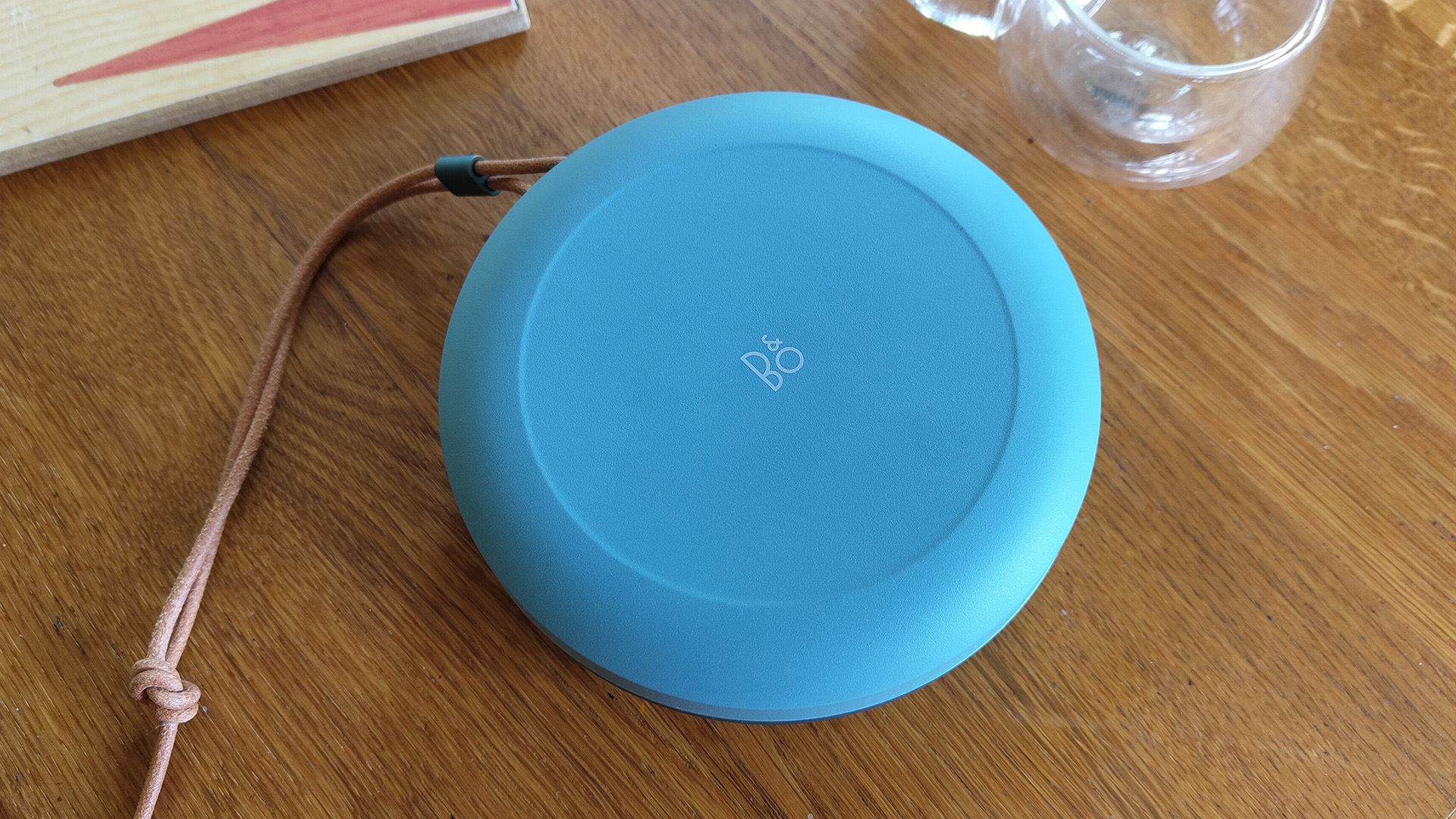
It’s good news if you thought that the second generation Beosound A1’s 18 hours of battery life was a little miserly, with the newer model increasing that figure to a very respectable 24 hours if you’re willing to play at slightly more conservative levels.
That matches the 24 hours of the JBL Charge 6 (although this will manage 28 with its Playtime Boost feature) and easily trumps the 12 hours offered by the smaller JBL Flip 7. It falls short of the 30 hours boasted by the Dali Katch G2.
Codec support is solid, with the Beosound A1 (3rd Gen) offering the standard SBC and AAC protocols alongside the higher-quality aptX Adaptive. Like the outgoing model, the third-gen speaker sticks with Bluetooth 5.1 – when contemporary alternatives are loaded with more current Bluetooth 5.3 and 5.4 standards, that feels just a tad retrograde. It’s hardly a dealbreaker for a portable speaker, though, and there are no issues with pairing or connection.
One update on this new model is that the A1 3rd Gen's USB-C connection works for playing music from a wired source device as well as for charging, with a fabric-covered USB-C to USB-C cable included in the box.
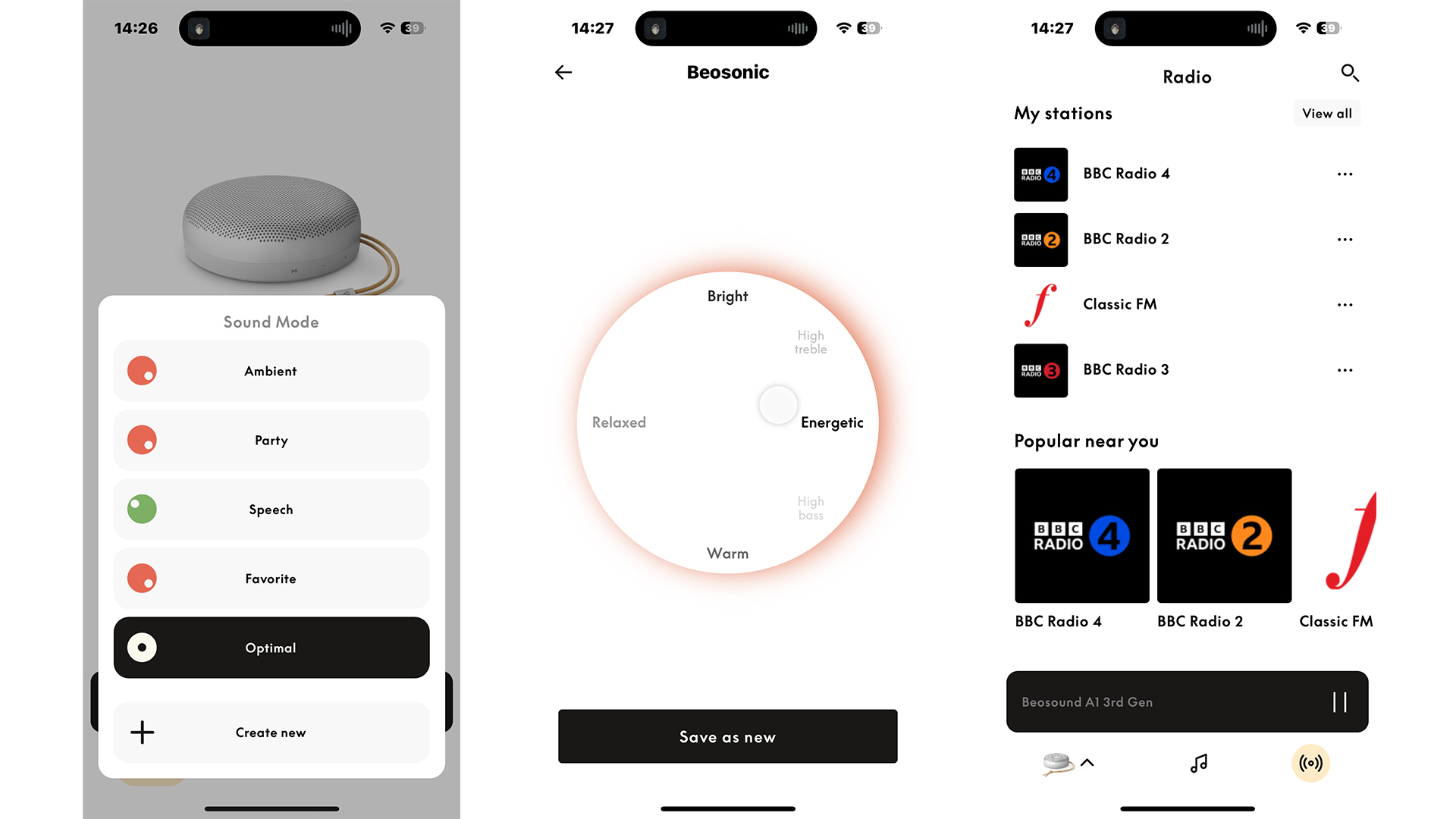
The Beosound A1 has a three-microphone array assisted by B&O’s ‘FarField’ technology for clearer, more transparent voice calls, meaning you can use your portable pal as a speakerphone if you’re at home or in the office. Calls are well-handled, reproducing human speech with solid levels of clarity and isolation, even if voices can sound a little hard-edged and processed to our ears.
The stylish circular speaker does have its blind spots. There’s no sign of Auracast, the increasingly popular audio sharing protocol which allows you to tether multiple Auracast-compatible units in tandem.
You can, however, create a stereo pair with another Beosound A1 (3rd Gen) unit or even an older A1 (2nd Gen) speaker – handy if you’ve still got your old model and don’t want it to go to waste.
Perhaps more notably, Bang & Olufsen has decided to drop Alexa support from this latest generation. We’re sad to see it go, but perhaps not many users found the need for a smart assistant from a portable speaker that, a lot of the time, wouldn’t be connected to the internet anyway.
Sound
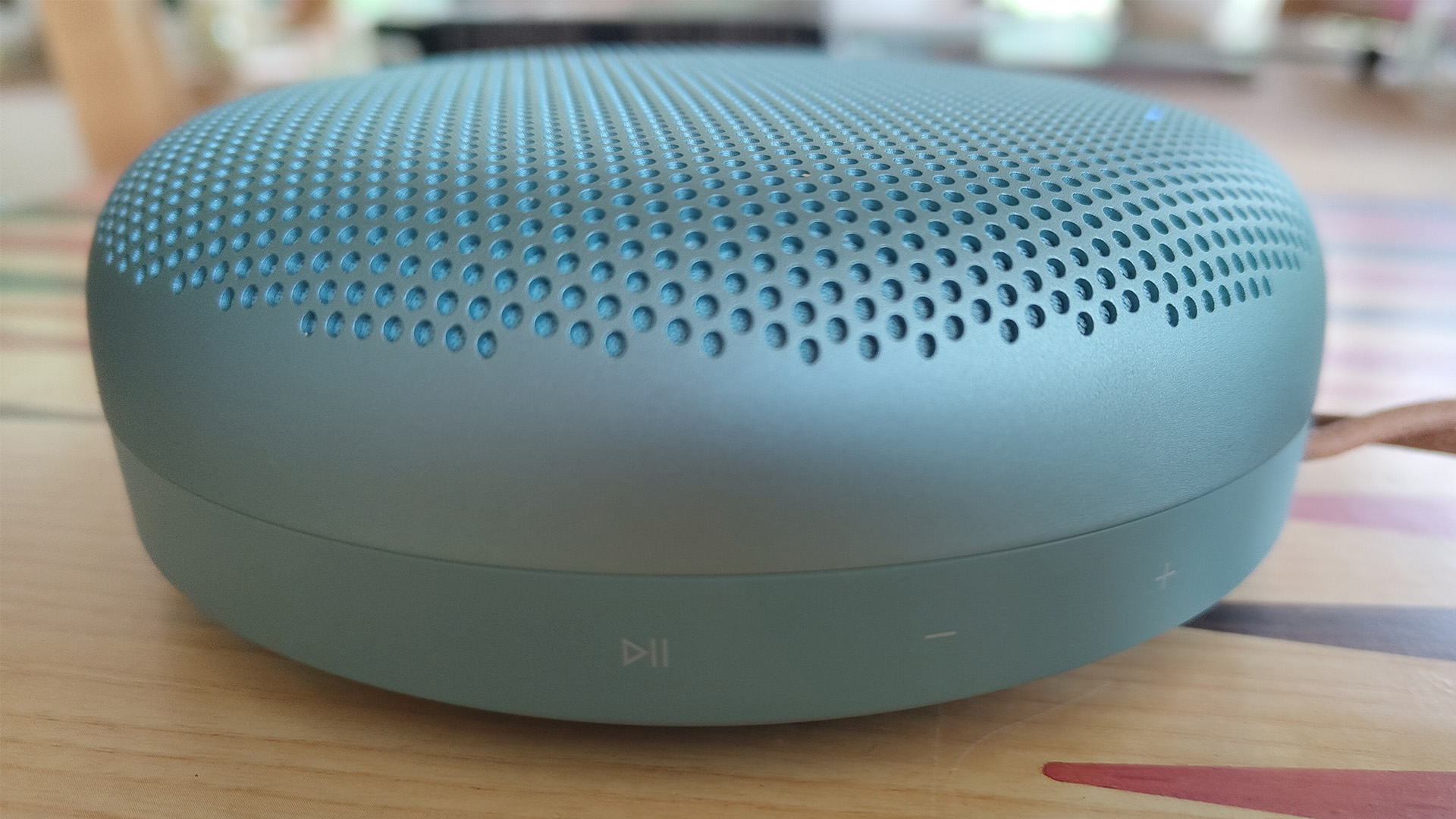
According to B&O, the third-generation Beosound A1 "features the largest woofer in its class, delivering deeper bass" for a "rich, room-filling sound from a compact form". The new unit boasts two 30-watt Class D amplifiers powering the 82.5mm woofer and a 15mm tweeter, with Bang & Olufsen promising sonic gains that see 2025’s edition outshine the smooth and authoritative presentation of the older model.
Ludwig Goransson’s Can You Hear The Music from Christopher Nolan’s epic biopic Oppenheimer kicks off our testing, and wouldn’t you know it, we’ve played right into the new Beosound A1’s hands. The speaker has a noticeable talent for midrange reproduction, bringing authenticity and sweetness to the rising, soaring strings of Goransson’s powerful, ever-undulating arrangement.
Naturally, this midrange adeptness extends to vocal reproduction. Nick Cave & The Bad Seeds’ heartrending Into My Arms is up next, and the B&O speaker excels at making Cave sound like his grave, sincere self.
Even when placed up against the excellent JBL Charge 6, Cave’s crooning grabs us more starkly through the Beosound A1. He’s simply more emotive, authentic and natural sounding – a great result for B&O.
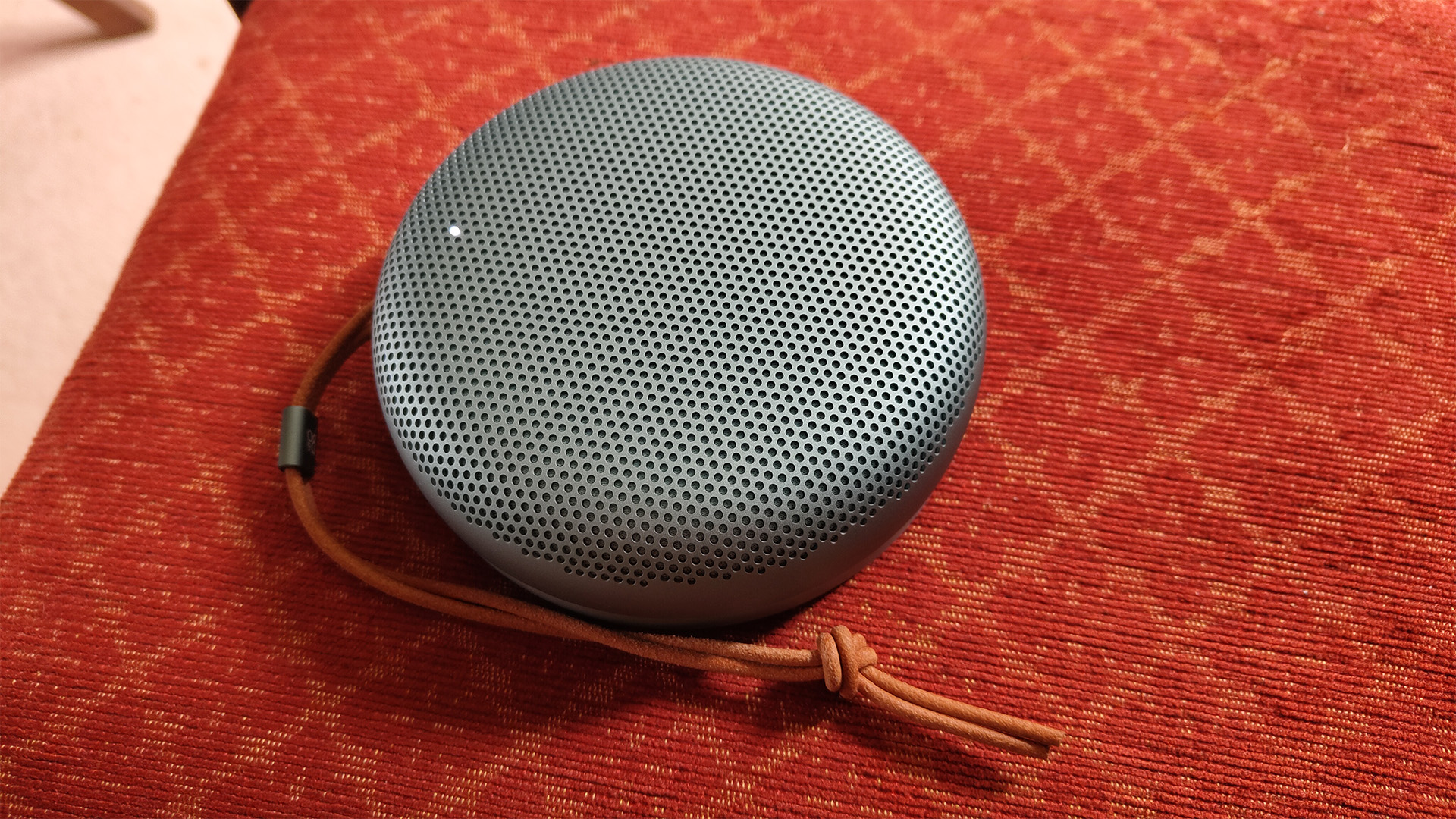
The new Beosound A1’s talents extend beyond the midrange. No, it’s not the bassiest operator you’ll find, but what lower-end reproduction there is comes across as taut and nicely controlled, so there’s rarely a sense that your tunes will be bogged down in a sea, or indeed a swamp, of blobby bass.
The B&O's presentation is, in fact, remarkably cohesive, but it doesn't spread music out with quite as much scale and depth in the way that a rival JBL rival will. We like the cohesion and tightness the Beosound A1 (3rd Gen) delivers, though.
While we’re never short on detail as we listen, things get even better when a USB-C tether is involved. A wired connection to an iPhone 15 offers noticeable sonic improvements, with the speaker hardening up just a touch but finding new levels of clarity, punch and spriteliness when listening to the same songs on Tidal via wired compared with Bluetooth.
In terms of pure wireless performance, is this the best-sounding Bluetooth speaker you can buy for the price? Naturally, the much larger (and cheaper) JBL Xtreme 4 will outperform it comfortably, while a head-to-head comparison with the (also cheaper) JBL Charge 6 makes for a more interesting test.
The Beosound A1 (3rd Gen) has that cohesion, authenticity and mid-range sweetness, but the engaging dynamism and musicality of the Charge 6 means that it’s hardly a whitewash in the B&O’s favour. Bear in mind that the Beosound A1 costs £130 / $50 / AU$400 more than the Charge 6 – in terms of sound-per-pound performance, the JBL does seem to offer better value for money.
Verdict
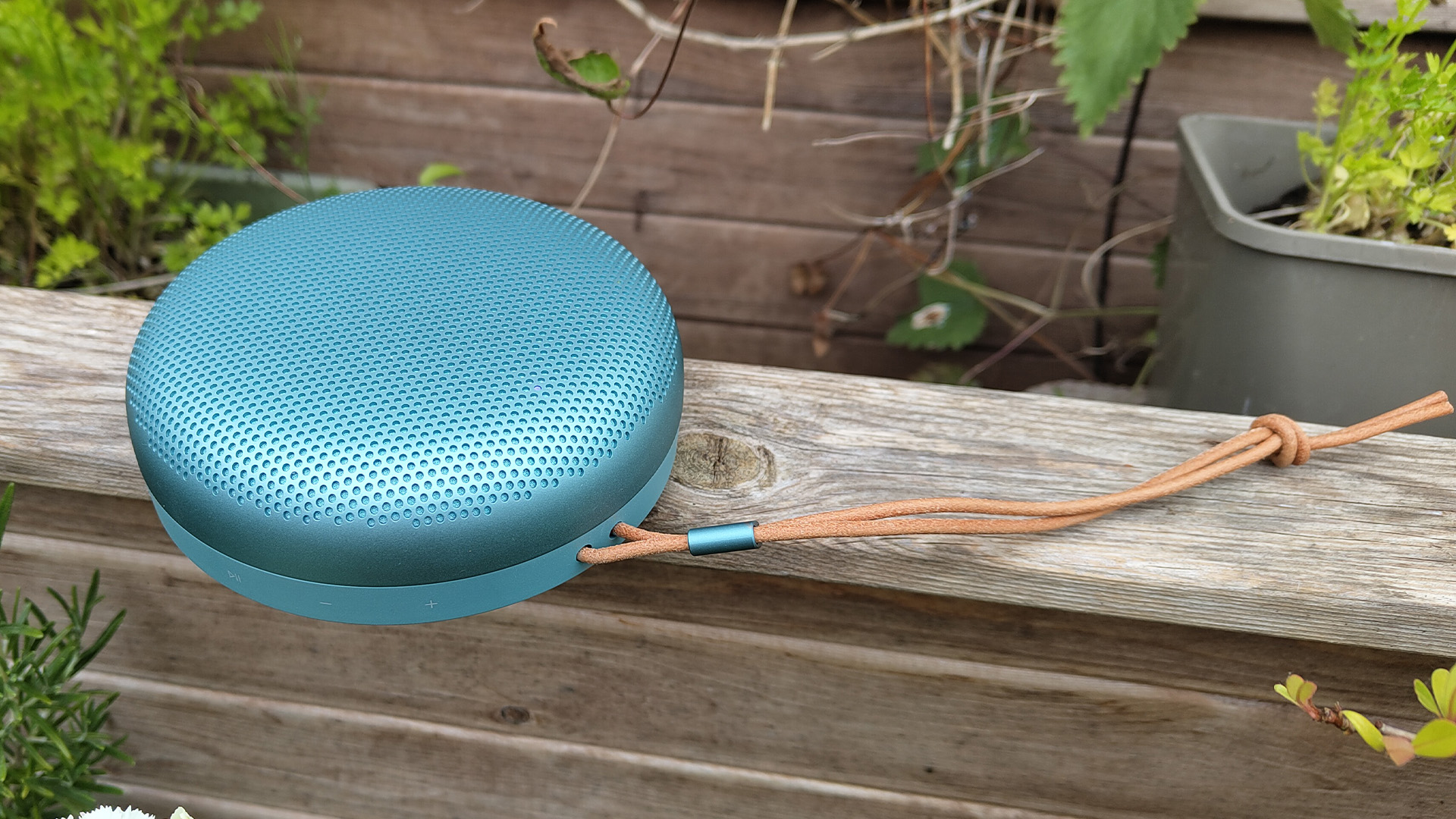
Initially, it can be tough to look past the price of the Beosound A1 (3rd Gen). At this level, you could get a JBL Charge 6 or Xtreme 4 for cheaper – both speakers with greater power and size than the Beosound can manage. When you can have rivals of such calibre and potency, it can be hard to see where the A1 has its place.
The thing is, it’s still an admirable performer given its compact size – not everyone wants a whopping speaker after all – bringing with it sufficient sonic talents which, when combined with its stylish, classy build and premium cachet, make for a charming product.
It’s not quite the best in class sound-wise, but given its unique appeal, the B&O Beosound A1 (3rd Gen) is the kind of thing that you can’t help but covet.
Review published: 3rd June 2025
SCORES
- Sound 4
- Build 5
- Features 4
MORE:
Read our review of the JBL Charge 5
Also consider the JBL Flip 7
Read our Dali Katch G2 review
Best Bluetooth speakers tried and tested for every budget

Harry McKerrell is a senior staff writer at What Hi-Fi?. During his time at the publication, he has written countless news stories alongside features, advice and reviews of products ranging from floorstanding speakers and music streamers to over-ear headphones, wireless earbuds and portable DACs. He has covered launches from hi-fi and consumer tech brands, and major industry events including IFA, High End Munich and, of course, the Bristol Hi-Fi Show. When not at work he can be found playing hockey, practising the piano or trying to pet strangers' dogs.
- Ketan BharadiaTechnical Editor
You must confirm your public display name before commenting
Please logout and then login again, you will then be prompted to enter your display name.
